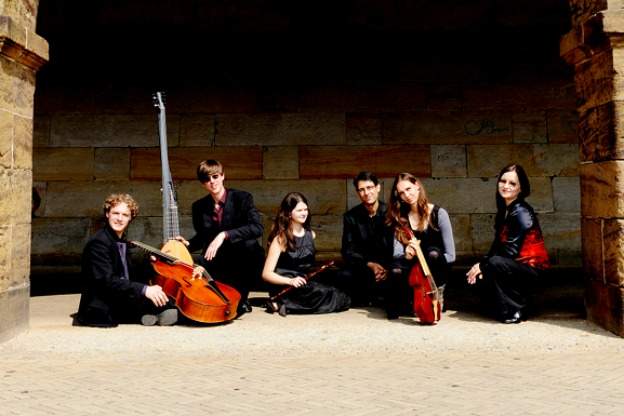
There is a lot more to Ensemble La Ninfea’s 2014 recording than meets the eye. Titled Le Masque De Fer, or "The Iron Mask," this recording is made in collaboration with the human rights organization, Amnesty International.
The Man in the Iron Mask
The title, "Le Masque de Fer" draws on both history and legend of one of France’s most famous prisoners, the man in the iron mask. The story is well-known and has been re-imagined time and again in fiction, poetry, plays, and numerous movies, most recently in 1998 in a Hollywood version starring Leonardo de Caprio. Historical references to the unknown prisoner can be found in letters and transfer papers between different holding cells—and while some sources are more credible than others, the identity of the prisoner has remained a mystery. According to Voltaire, the man in the iron mask was an illegitimate brother of King Louis XIV, a theory the 19th century French Author Alexandre Dumas later elaborated on in the final installment of his Three Musketeers. In the adventure epic, the prisoner is the King’s twin and as such, a threat to his throne. Thus, the ill-fated twin is locked away, and forced to wear a mask of iron to forever conceal his identical resemblance. There are lots of other theories as to the identity of the masked prisoner: the son of Oliver Cromwell, an Italian diplomat, a general who held state secrets, a servant who knew too much, an illegitimate son… The true identity—and the true crime, if any—will probably forever remain a mystery. After over 30 years in captivity, the man in the iron mask died in prison in 1703.
While most accounts usually agree on a long imprisonment in maximum security, not all relate such a cruel one as the movies do. Some contemporary descriptions place the masked prisoner in isolation behind a cloth of velvet rather than a helmet of iron. Other more general accounts of the French prison system tell how wealthy prisoners were sometimes allowed to have servants in jail, though we can’t know if our particular prisoner was ever granted such an advantage.
A Musical Prisoner?
The available information about the prisoner's conditions is inconsistent, but all things considered, there is reason to believe that despite his desolation, the masked prisoner was cared for with enough food and furnishings and medical care, and even allowed access to books and instruments to play, perhaps a lute. This more benevolent account is what has inspired Ensemble La Ninfea to make their present recording. What kind of music would this prisoner have played, and more broadly, what sort of music relates the situation of any long term prisoner?
In keeping with the 18th c. practice that composers wrote elaborate dedications to kings or important patrons in the frontispieces of their publications, the members of Ensemble la Ninfea have also written an elaborate dedication in the front of their CD booklet. Their dedication is, however, not to one important or revered, but rather to the unnamed prisoner.
Amnesty International
This is an unusual recording, and an imaginative program. Through it, Ensemble La Ninfea finds a structure for both creative musical expression and a platform for a real world cause. At the end of the cd liner notes is an invitation from Amnesty International to take part in a letter writing campaign to support individuals whose human rights have been abused.
[playlist item-1]









